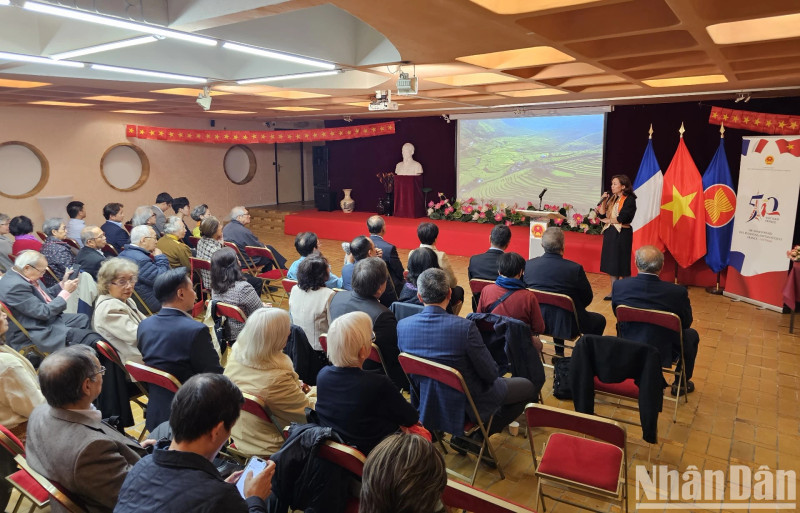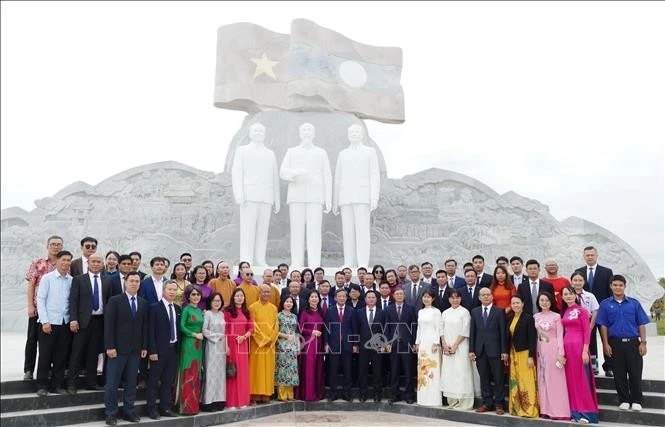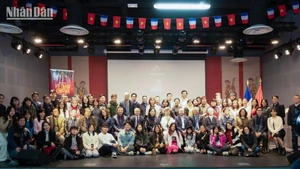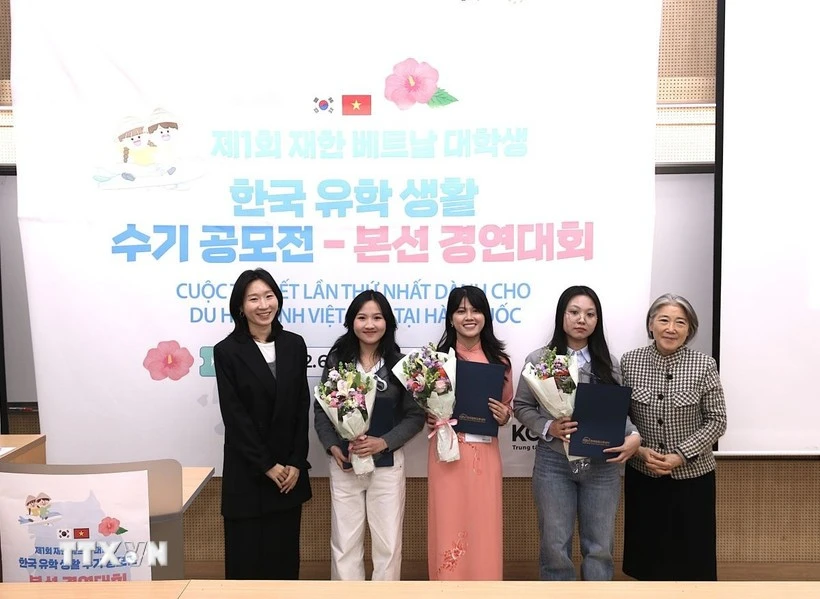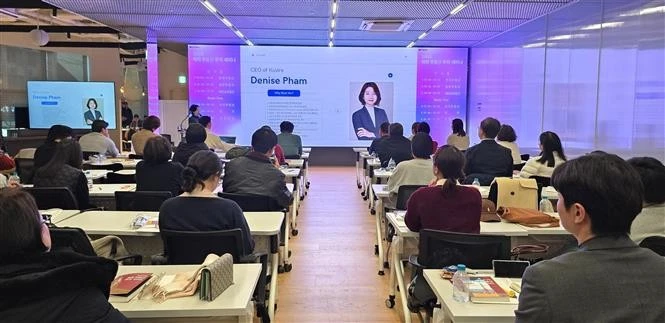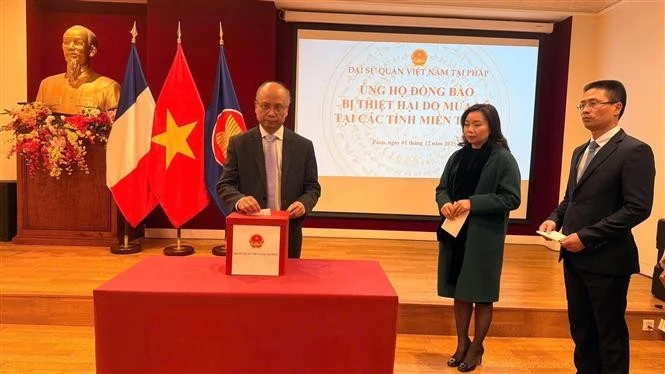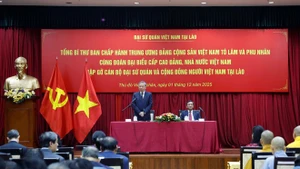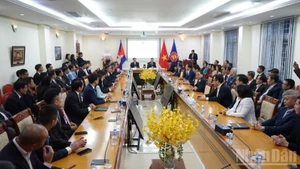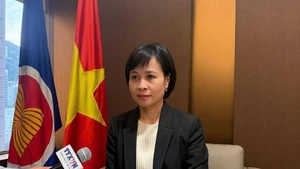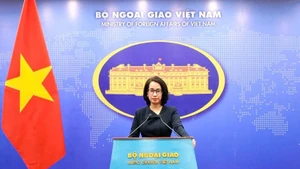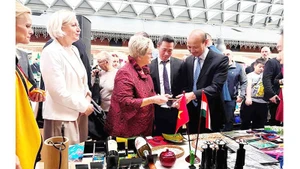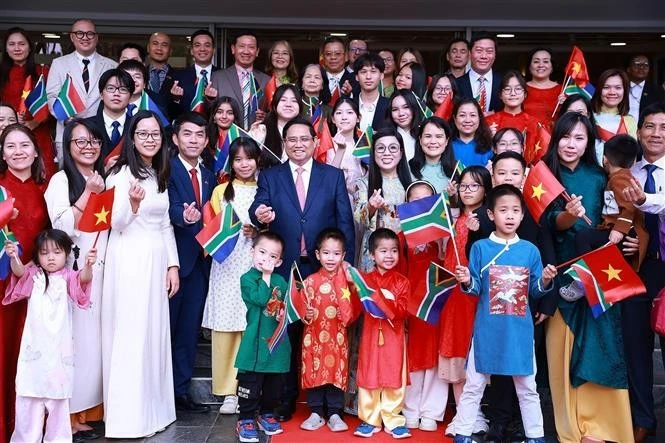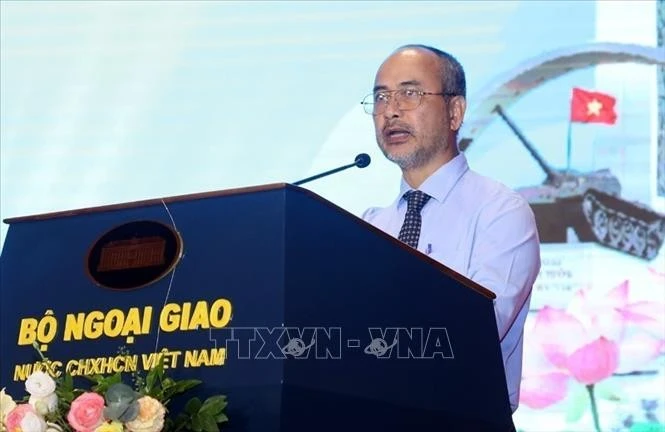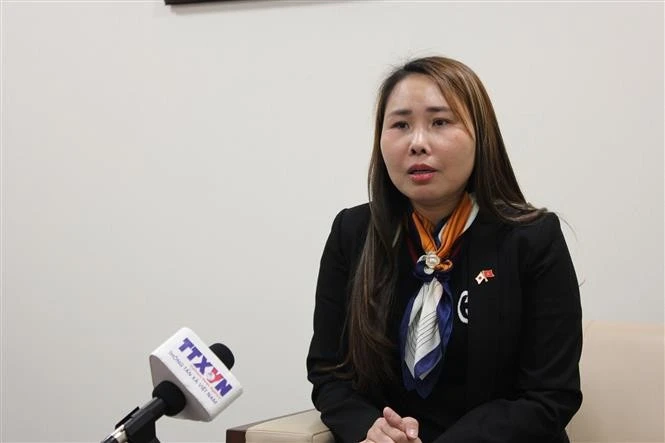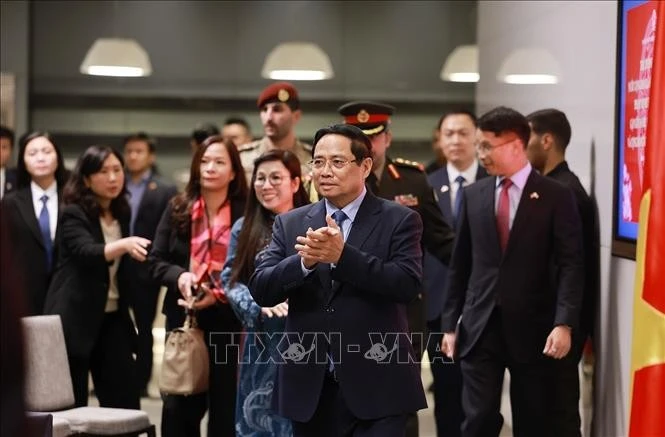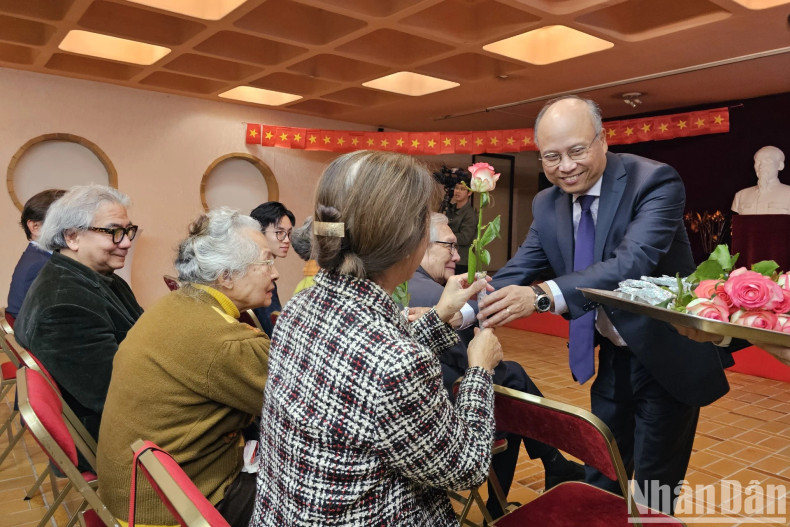 |
Also on the occasion of October 20, the Vietnamese Ambassador to France Dinh Toan Thang presented flowers to ladies, overseas Vietnamese women and female officers of Vietnamese representative agencies in France.
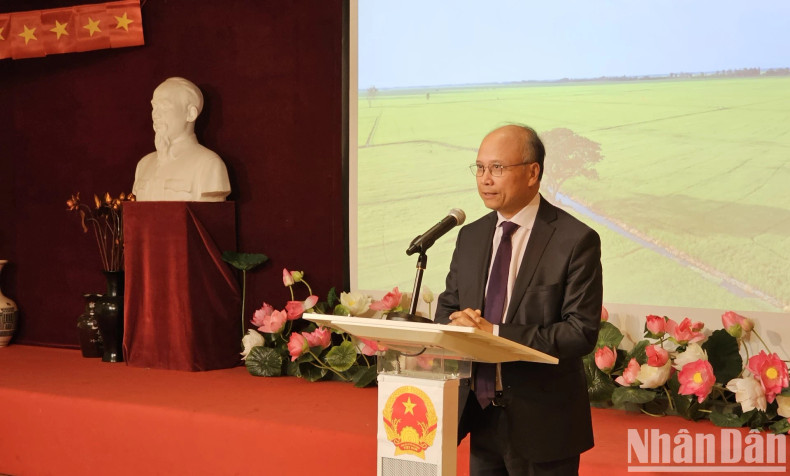 |
According to Ambassador Dinh Toan Thang, the Vietnamese Embassy in France not only has important diplomatic significance between the two countries but also the deep affection of the community of overseas Vietnamese living, studying and working in France. With the Party and State's efforts to promote people-to-people diplomacy, the process of building the embassy not only received emotional, but also huge material support, from overseas Vietnamese in France.
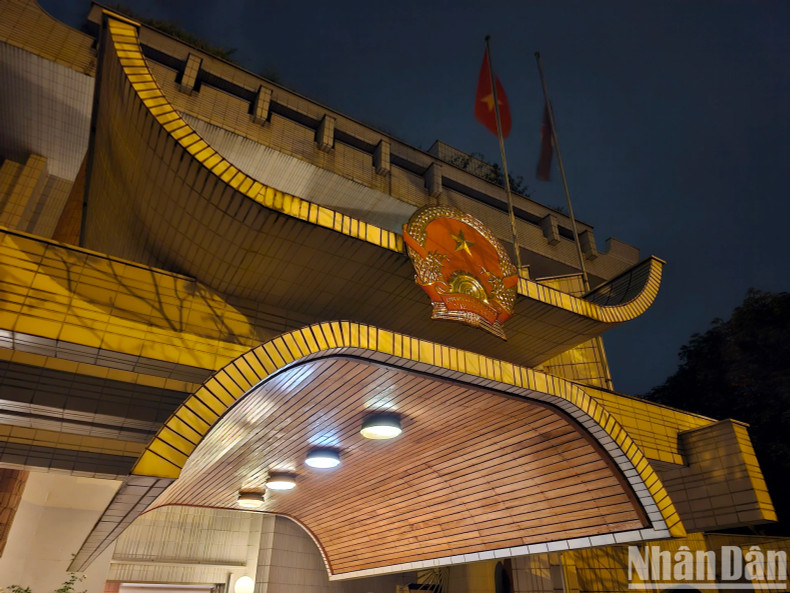 |
The embassy was designed in the context that the war to protect the country had not ended. The technical design documents, construction permits, and communication documents between the land owner and the representative of the Vietnamese Embassy recall many emotional memories of a historical period of Vietnamese diplomacy, as well as the contributions of architects, overseas Vietnamese people and representative agency officials in the early period.
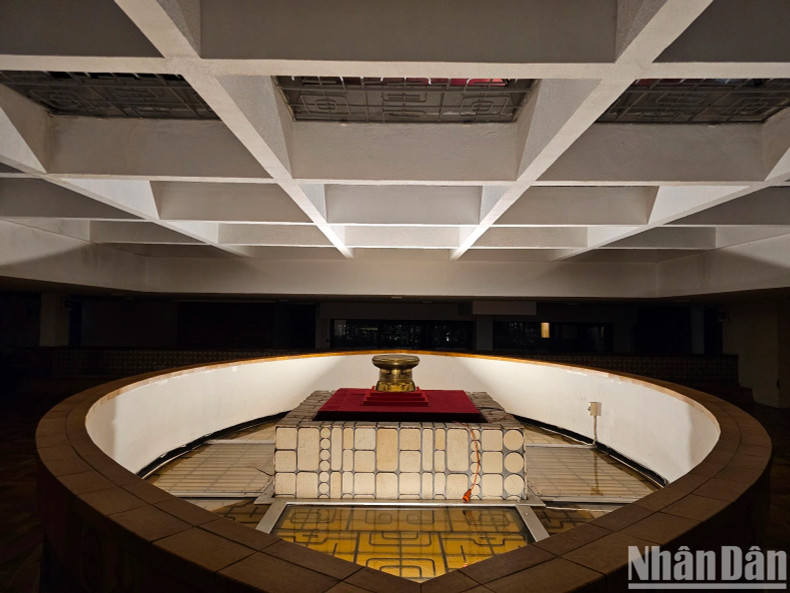 |
Originally located on a plot of land on a street with many historical and cultural relics, the construction of the Embassy building, which was also the living place of the representative agency's staff at that time, required a license from the city of Paris and faced many difficulties.
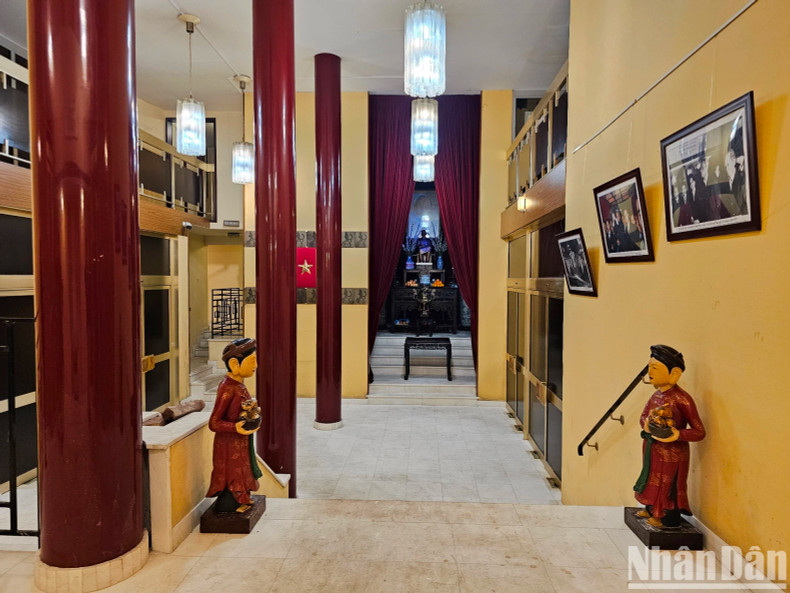 |
The document requesting permission to build the Embassy at 62 Boileau Street, designed by patriotic Vietnamese architect Vo Thanh Nghia, was first sent to Paris City Hall in January 1973, but it was rejected. With unremitting efforts, Ambassador Vo Van Sung, Representative General of Vietnam in France, along with delegation officials and architect Vo Thanh Nghia, spent thousands of working days to meet the requirements of the city.
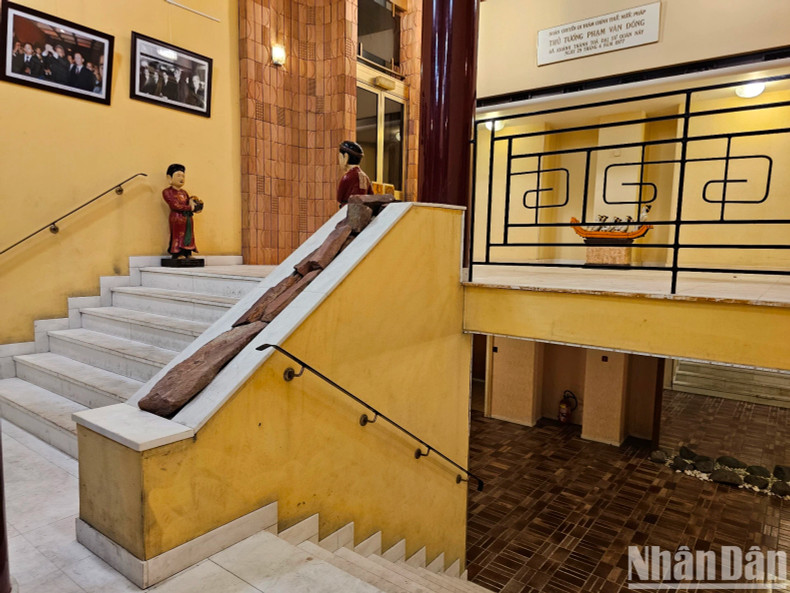 |
It was not until August 7, 1975, that a construction permit was obtained and at the end of that month, the first bricks of the Vietnam Embassy building were laid. Every day, overseas Vietnamese including the elderly, businessmen, young people, students, and intellectuals, not only in Paris but also from other cities, came to help and support construction workers. All contributions, big or small, from the community came from the patriotism of Vietnamese people in France.
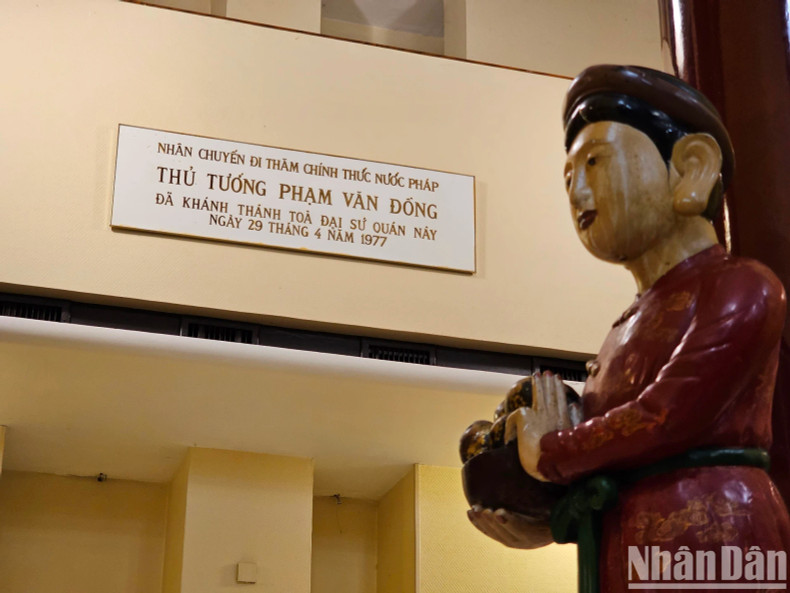 |
On April 29, 1977, the Vietnamese Embassy in France was officially inaugurated on the occasion of Prime Minister Pham Van Dong's official visit to France.
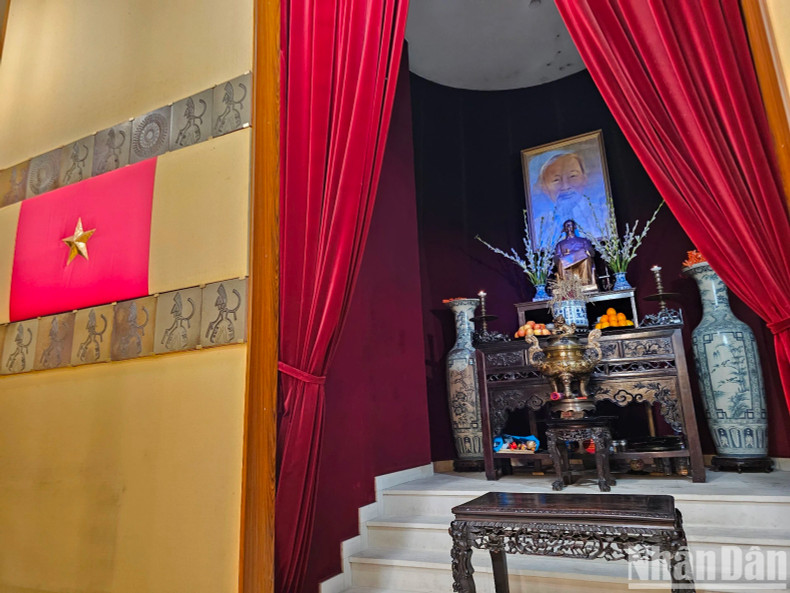 |
At that time, Vietnam's economic situation was still difficult. The Industry and Trade Association of restaurant and business owners, along with people from soldier backgrounds active in the association of workers and foremen participated in building the Embassy. The wish for the formation of a common home of Vietnamese in France requires a lot of sweat and effort from overseas Vietnamese.
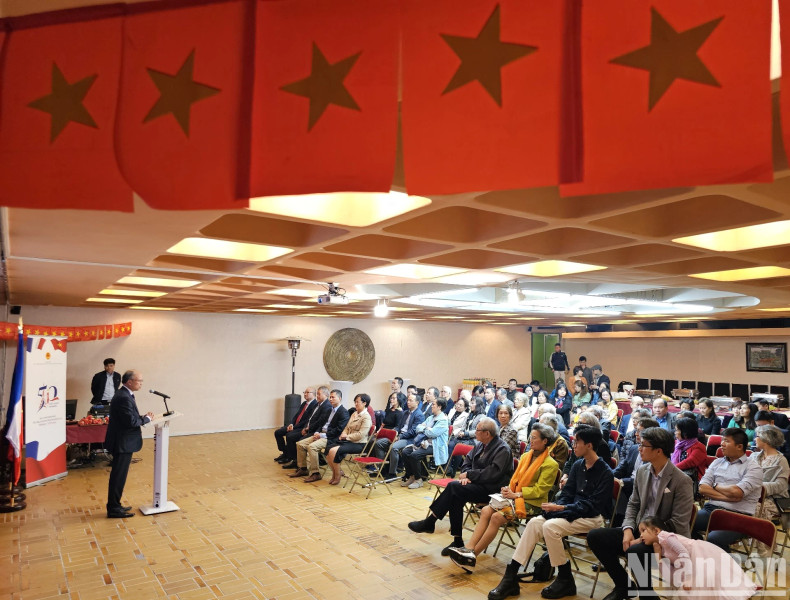 |
Up to now, the Vietnamese Embassy building on Boileau Street is still the convergence point of activities, ideas, and emotions of Vietnamese people in France, towards the country. During the period when the country was not at peace, all activities towards the Fatherland of overseas Vietnamese in France faced many difficulties. But that does not mean that the peace movement is less exciting.
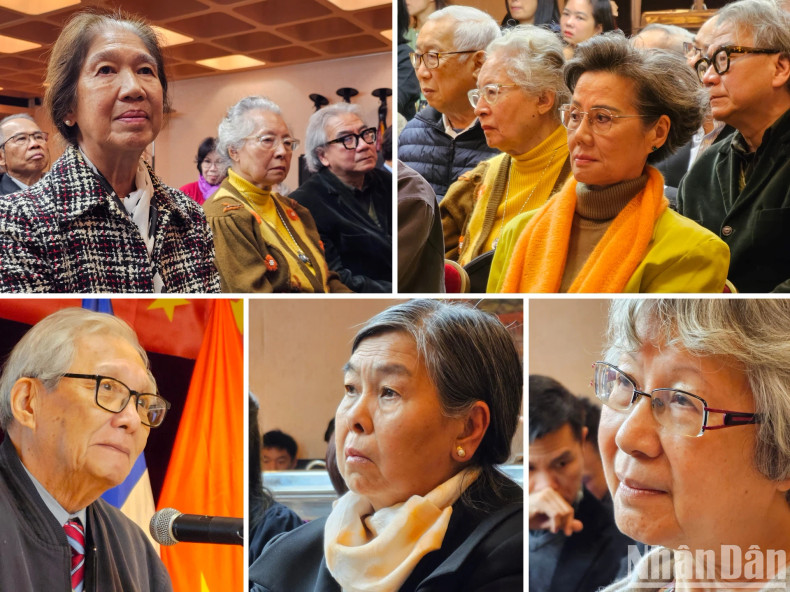 |
In the memories of many generations of Embassy officials and overseas Vietnamese in France, building No. 62 Boileau Street in Paris is a silent witness to the solidarity and growth of the community.
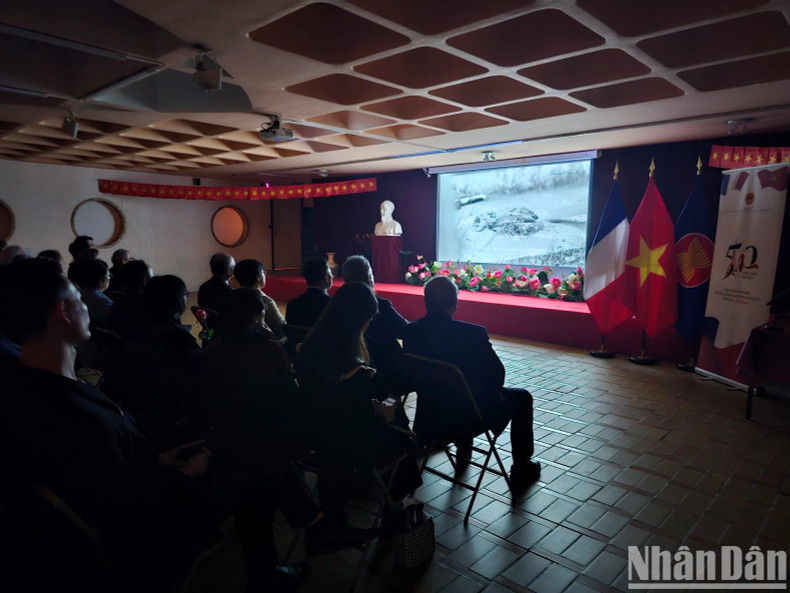 |
The national flags sewn and hidden by overseas Vietnamese people in many places in France, since the day Vietnam declared independence, have flown brightly on par with the French flag, on the day President Ho Chi Minh arrived in Paris, at the official invitation of the French Government in June 1946. Until August 7, 1975, when the Embassy of Vietnam in France was licensed to build, the Fatherland still received a lot of love and contributions from overseas Vietnamese.
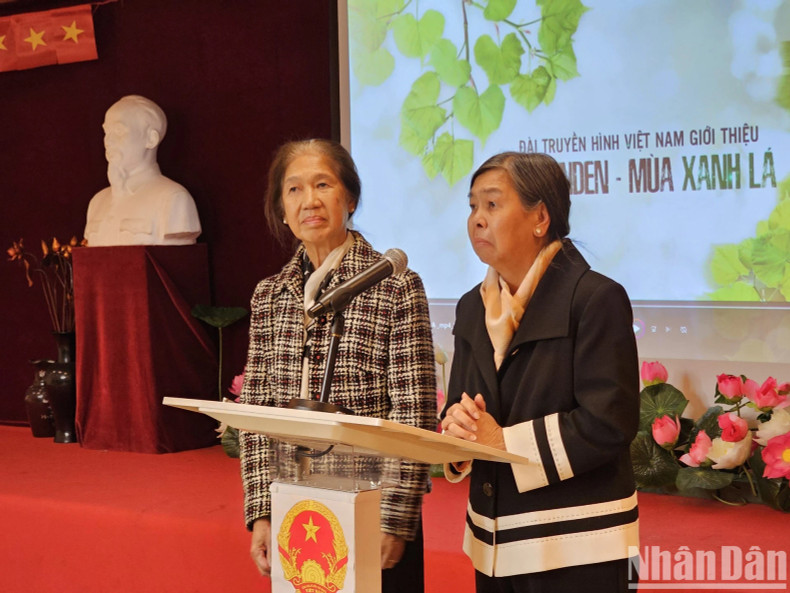 |
The efforts of people's diplomacy have had many achievements, typical examples of which are the success of the Paris Agreement and the formation of the Embassy building. In subsequent historical periods until today, generations of officials of the Vietnamese representative agency in France continue to promote the spirit of President Ho Chi Minh, promoting love and solidarity between people and overseas Vietnamese with the Fatherland. (In the photo: Bui Kim Tuyet and Bui Kim Thuy, two grandchildren of architect Vo Thanh Nghia, share their youthful memories next to their uncle's embassy design).
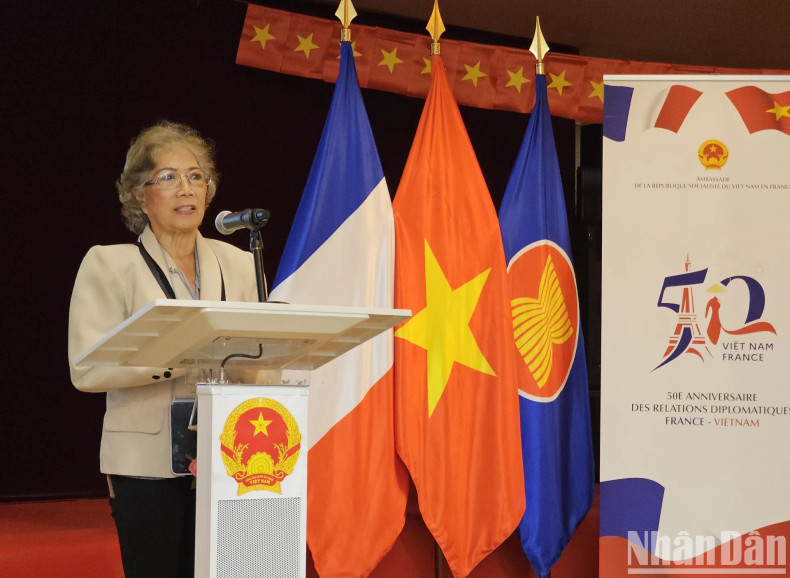 |
To date, there are more than 35 friendship associations with Vietnam throughout France. The Vietnamese language is also taught at several high schools and universities in many localities in France. (In the photo: Vanna Siriphaniphong, President of the Association of Labour Workers in France - the core association of the former Vietnamese Association, made many valuable contributions both in terms of material and effort to build the Embassy building).
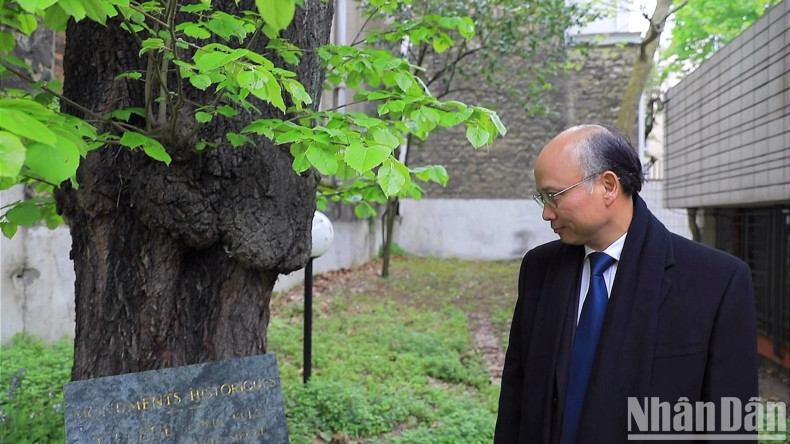 |
The Linden tree on the Embassy grounds, which is a historical-cultural relic of the city of Paris, was once the resting place of poet Boileau, who wrote emotional poems. During the construction of the building and after, the Linden tree is still maintained and cared for by the Vietnamese Embassy. For that reason, the Linden tree is like an object that witnesses the years of operation of the representative agency and the growth of the Vietnamese community in France.
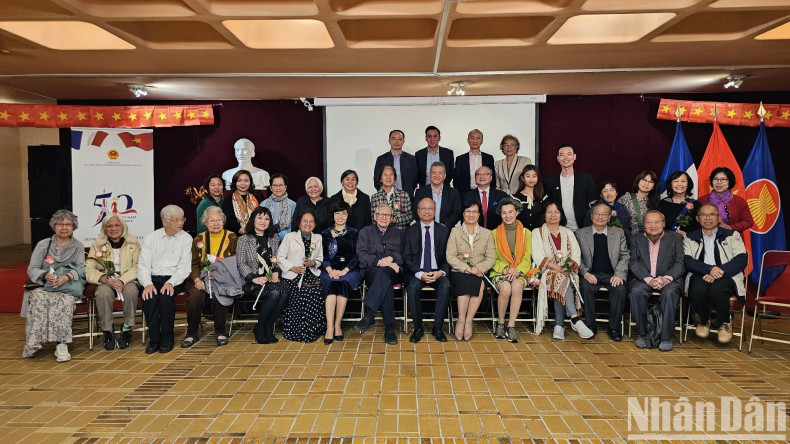 |
The Vietnamese Embassy in France has accompanied the country and its overseas Vietnamese through many historical changes. Now it is time to turn a new page and needs to be changed and upgraded to ensure its functionality and diplomatic work and welcoming the Vietnamese community. However, the feelings of overseas Vietnamese for their homeland and historical memories of national solidarity, will always be the country's heritage and continue to grow "green" like a Linden tree.
